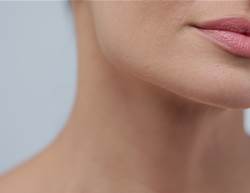Extended time spent frowning at screens isn’t great for much—sleep, concentration, the list goes on—but it can also fast-track the arrival of those pesky forehead lines. Specifically, we’re talking about 11 lines, also known as frown lines.
Wrinkles and skin changes are a natural part of ageing, but let’s face it—no one wants them showing up earlier than necessary. Below, dermatologists break down exactly what causes 11 lines, how to help prevent them and how to treat existing lines to soften their appearance.
What are the 11 lines?
11 lines are medically known as glabellar lines—those vertical, parallel lines that show up between your eyebrows, explains cosmetic dermatologist and nanoscientist Dr Cula Svidzinski. They’re nicknamed “11 lines” because they often appear in pairs, resembling the number 11.
“Initially, these lines are only visible with muscle movement,” Dr Svidzinski adds—for example, when you squint or frown while reading small text. “But over time, with repeated expressions and collagen loss due to ageing or sun exposure, the lines can become permanent.”
Types of forehead wrinkles
There are two main types of forehead wrinkles, says Dr Svidzinski:
11 lines or glabellar lines
These vertical lines form between the brows due to repeated facial expressions and muscle movement in the brow area.
Horizontal forehead lines
These run across the forehead and are typically caused by repetitive raising of the eyebrows.
Dynamic vs. static wrinkles
Wrinkles also fall into two categories, adds double board-certified dermatologist Dr Elizabeth Houshmand: dynamic and static.
Dynamic wrinkles develop from repeated facial movements and are only visible when making an expression.
Static wrinkles, on the other hand, show even when your face is at rest. They’re usually linked to long-term sun exposure, a loss of skin elasticity, and natural ageing.
What causes forehead wrinkles/frown lines?
Forehead wrinkles and 11 lines are caused by repeated contraction of facial muscles during expressions like frowning or squinting, our experts explain. They tend to be more noticeable in people who are highly expressive and can appear at any age, says Dr Houshmand. Over time, these lines can become static or permanent. Collagen loss due to ageing, sun exposure and smoking can make them worse, she adds.
Can I get rid of forehead wrinkles/frown lines?
It depends on how deep or permanent the lines have become. “If the lines are deeply etched into the skin, you may not be able to completely eliminate them,” says Dr Houshmand. “That’s why I recommend patients begin treatment when they first notice thin, fine lines. Early intervention can prevent them from becoming fixed.” Prevention is far easier than treating established lines and can make a noticeable difference, she adds.
What are the treatments for getting rid of 11 lines?
There are several ways to both treat and prevent 11 lines and other types of facial wrinkles.
Botox, lasers and filler
In-clinic dermatology treatments such as Botox, fillers and resurfacing lasers are among the most effective options, according to our experts. Botox, an injectable, works by temporarily relaxing the muscles responsible for the lines. Fillers may be used to smooth out deeper lines. Laser resurfacing helps improve skin tone and texture, softening the look of existing lines.
One important caveat with fillers: “Hyaluronic acid fillers can be injected into static 11 lines to help soften them. However, this technique carries a high risk of complications, including vision loss and is generally not recommended,” says Dr Svidzinski.
Topical treatments
Topical treatments can help soften the appearance of fine lines and reduce the formation of new ones. “Don’t overlook the importance of daily and consistent sunscreen use—it helps prevent UV damage and may delay premature ageing,” says Dr Svidzinski. Aesthetic nurse practitioner Jackie Spagnuolo adds that key ingredients to look for include:
- Retinoids to boost cell turnover and collagen production
- Peptides to stimulate collagen
- Hyaluronic acid to hydrate and plump the skin
“Consistency is key,” she says, adding that hydration and a healthy diet also support skin health.
Facial treatments
Spagnuolo recommends regular chemical peels and microneedling to enhance skin cell turnover and support collagen renewal. Microneedling creates micro-injuries in the skin that trigger healing and regeneration. Chemical peels, on the other hand, “remove the outermost layer of skin and encourage the growth of fresh, new skin,” she explains.










